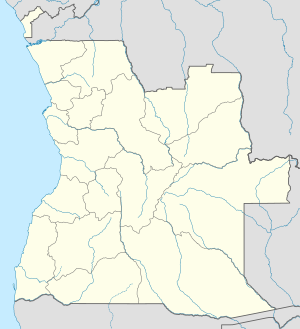Kuito
|
Kuito Silva Porto |
|
|---|---|
| Municipality and town | |
| Location in Angola | |
| Coordinates: 12°23′S 16°56′E / 12.383°S 16.933°E | |
| Country |
|
| Province | Bié Province |
| Founded | 1750 |
| Area | |
| • Total | 4,814 km2 (1,859 sq mi) |
| Elevation | 1,695 m (5,561 ft) |
| Population (2010) | |
| • Total | 185,302 |
| • Density | 38/km2 (100/sq mi) |
| Time zone | WAT (UTC+1) |
| Area code(s) | (+244) 48 |
| Climate | Cwb |
Coordinates: 12°23′S 16°56′E / 12.383°S 16.933°E
Kuito (also Cuito) is a city located in central Angola. It is the administrative capital of Bié Province. Under Portuguese rule until 1975, it was called Silva Porto. Kuito was under siege in 1993/94 and again in 1998/99 by the rebel forces from UNITA. Many buildings in Kuito are still heavily damaged as a result of these sieges.
The city of Kuito is built in the historical heart of the Ovimbundu kingdom. The ruler of the Ovimbundu was named Viye and he married a Songo woman named Cahanda. Together they built the city and later the Portuguese would name the Bié Province after the ruler. The Ovimbundu were known for selling captives from neighbouring tribes to the European slave traders which made the area an ideal location for the slave business and brought colonists to the area. The Portuguese "founded" the city in 1750. They later called it Silva Porto after António da Silva Porto who built his home embala Belmonte in the area. The pleasant climate in the Bié Province was attractive to Portuguese settlers and many made their home in Silva Porto in the early 1900s when the Benguela Railway connected the city to the coast.
Kuito had a long history of violence starting with the African slave trade and tribal warfare. Later in the 1960s the Portuguese used the town of Silva Porto as a training centre for training black Portuguese Army soldiers to send Northern Portuguese Angola in order to fight the nationalist guerrillas, during the Portuguese Colonial War.
...
Wikipedia

